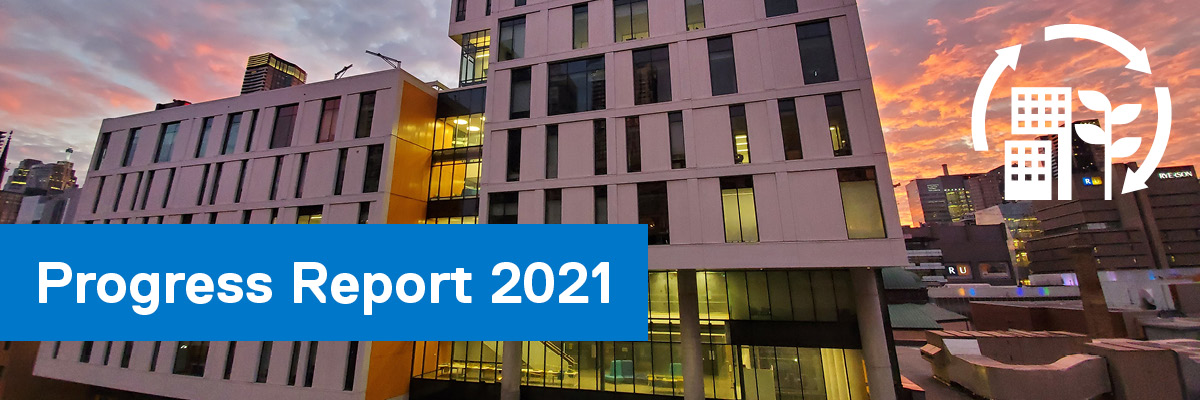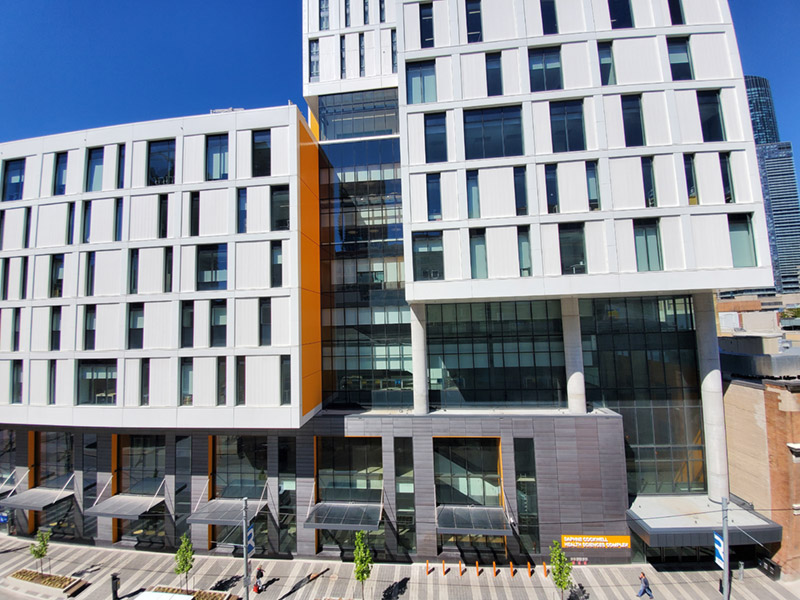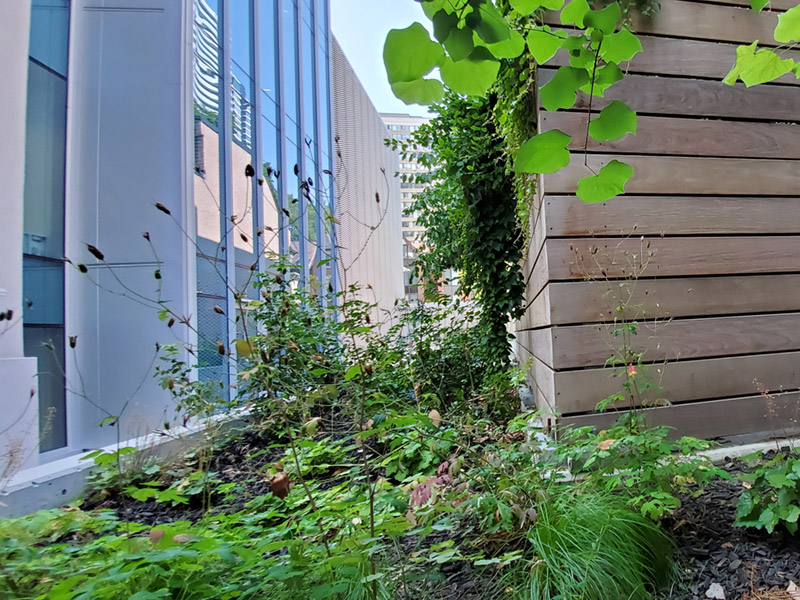Water

TMU tracks its water consumption through the analysis of monthly utility bills. Water consumption increased by approximately 30% in 2019/2020. The majority of this increase is the result of DCC and CUI opening. Efforts are underway to reduce water consumption and reverse this trend over the coming years.
Water consumption
increased by 30% in 2019/2020.
Annual Water Consumption

This bar graph shows TMU's annual water consumption from 2014 to 2020 measured in m3 (cubic metres).
| Fiscal Year | Water Consumption (Volume - m3) |
|---|---|
| 2014/2015 | 208,714.36 |
| 2015/2016 | 283,885.84 |
| 2016/2017 | 305,995.54 |
| 2017/2018 | 305,208.29 |
| 2018/2019 | 319,200.17 |
| 2019/2020 | 413,396.67 |
Grey water collection system
Two buildings on campus, ENG and DCC, make use of grey water collection systems. Water collected from showers, taps and rain is treated and used to flush toilets.
Water efficient landscaping
The CUI building collects rainwater and stores it in a cistern. The stored rainwater is the primary source of irrigation for the green roofs.
The Urban Farm at TMU atop the ENG building and DCC’s new green roof are designed to help with capturing rainwater and reducing stormwater runoff.


Grey water collection system
The newly built Daphne Cockwell Health Sciences Complex (DCC) makes use of a grey water collection system; water collected from showers, taps and rain is treated and used to flush toilets. Such design features are also being considered for new buildings on campus that are currently in the design phase.

Water efficient landscaping
The DCC and CUI buildings also include stormwater capture that collects rainwater and stores it in a cistern. The accumulated rainwater is the primary source of irrigation for the CUI and DCC green roofs. DCC’s new green roof is also designed to help with capturing rainwater and reducing stormwater runoff.
In 2020, the first phase of the public realm project was completed. It helps reduce stormwater runoff by increasing the amount of vegetated surface and trees, which will in turn absorb the water before it gets to the city sewers. Water efficient landscaping also contributes to reducing heat island effects and buildings’ cooling requirements.
